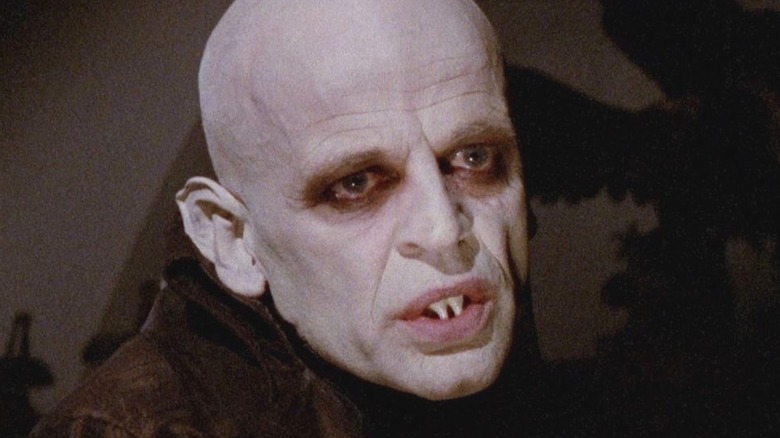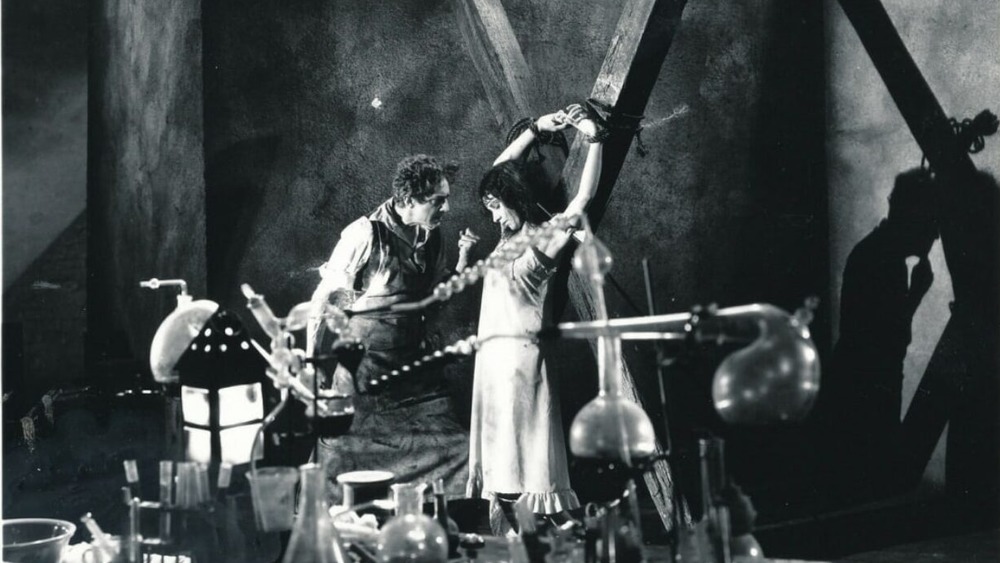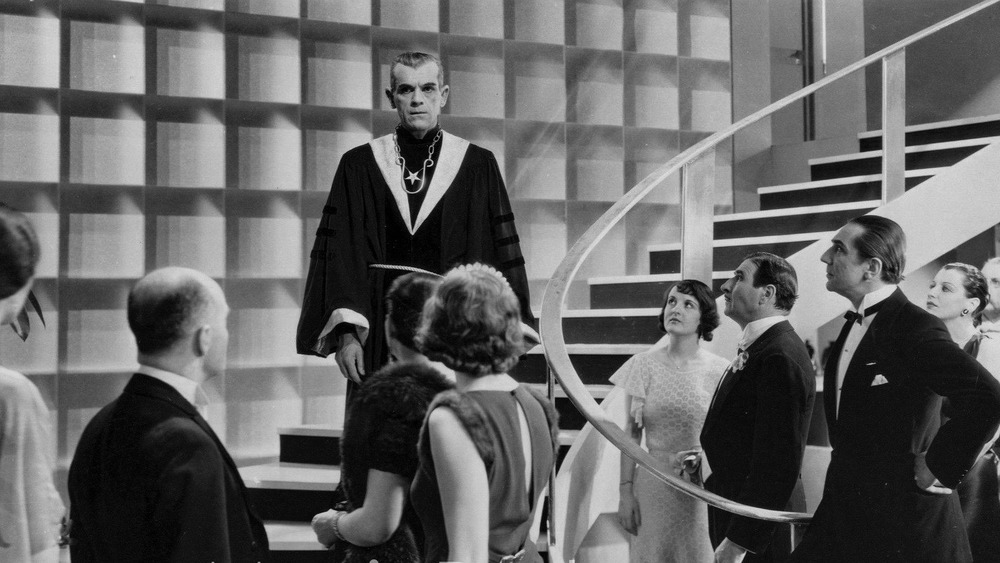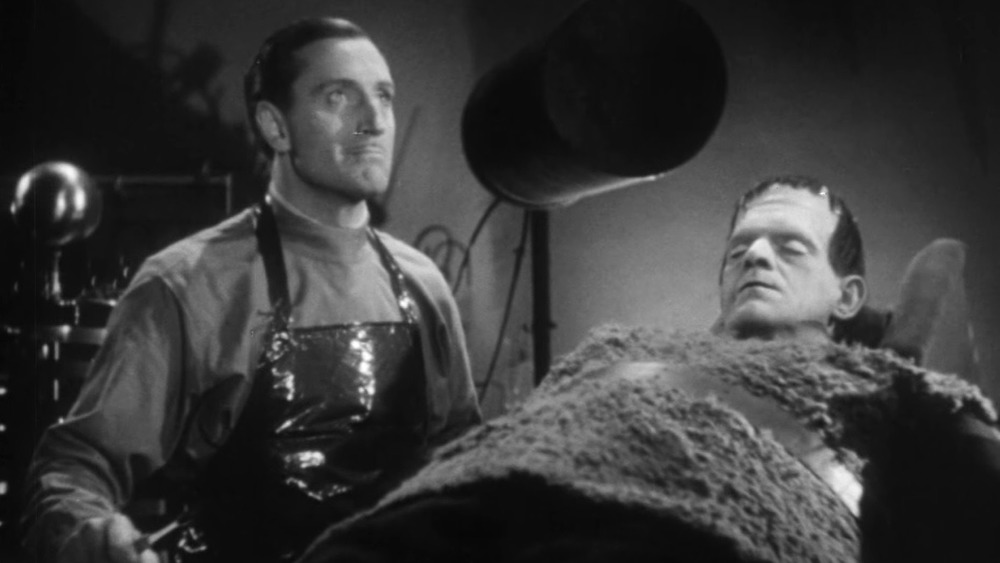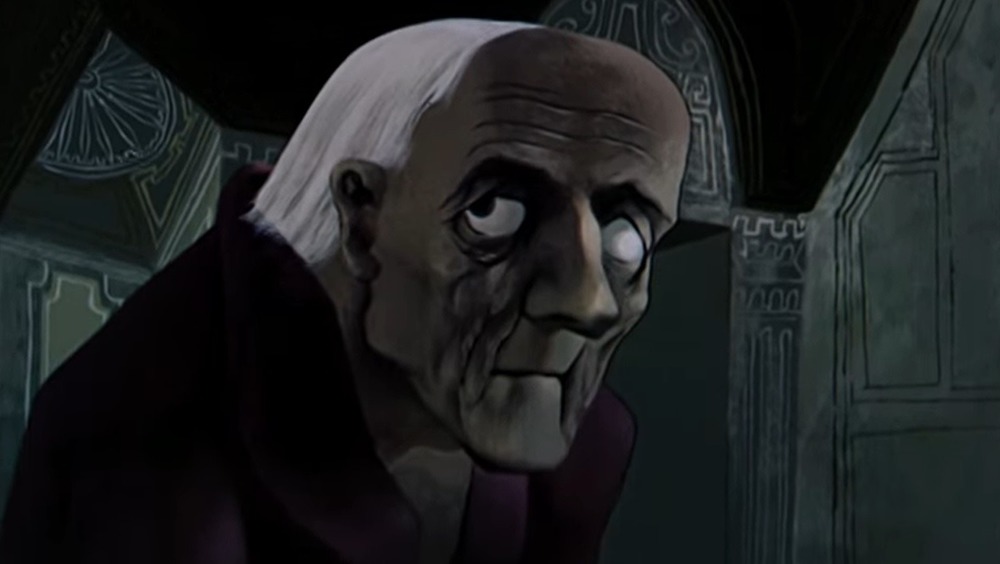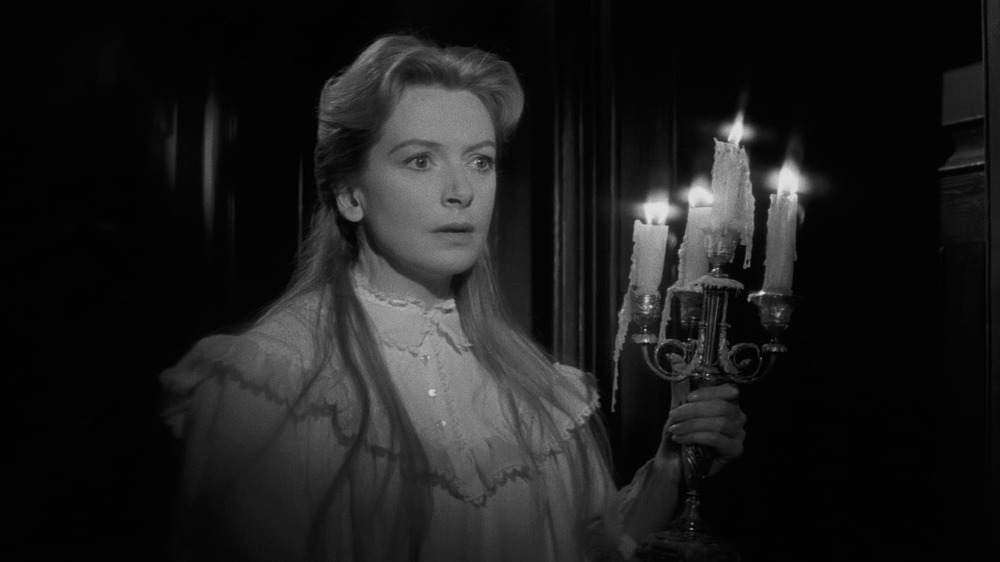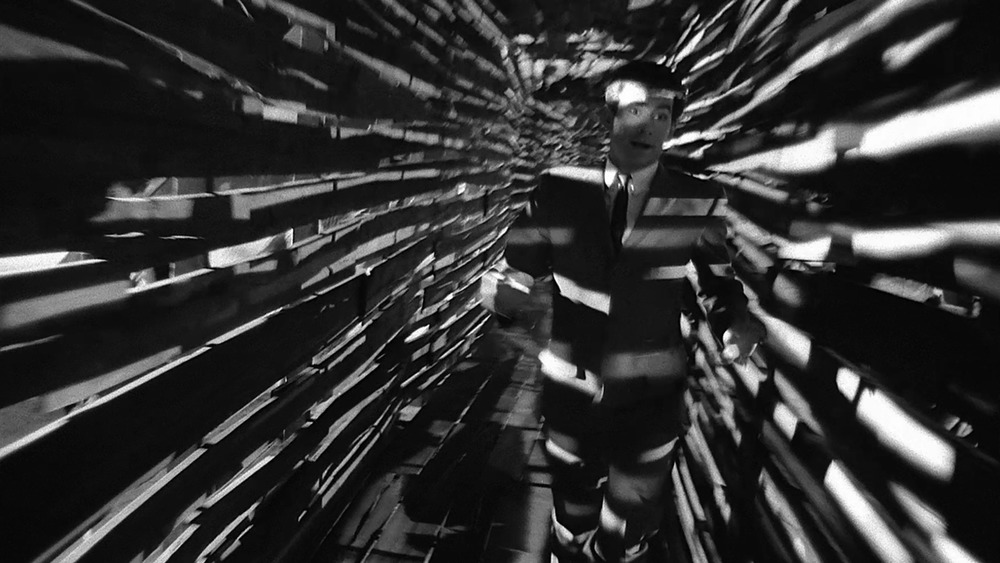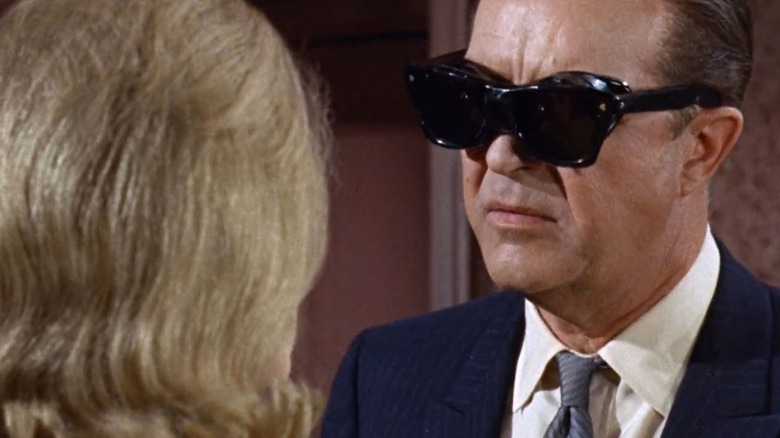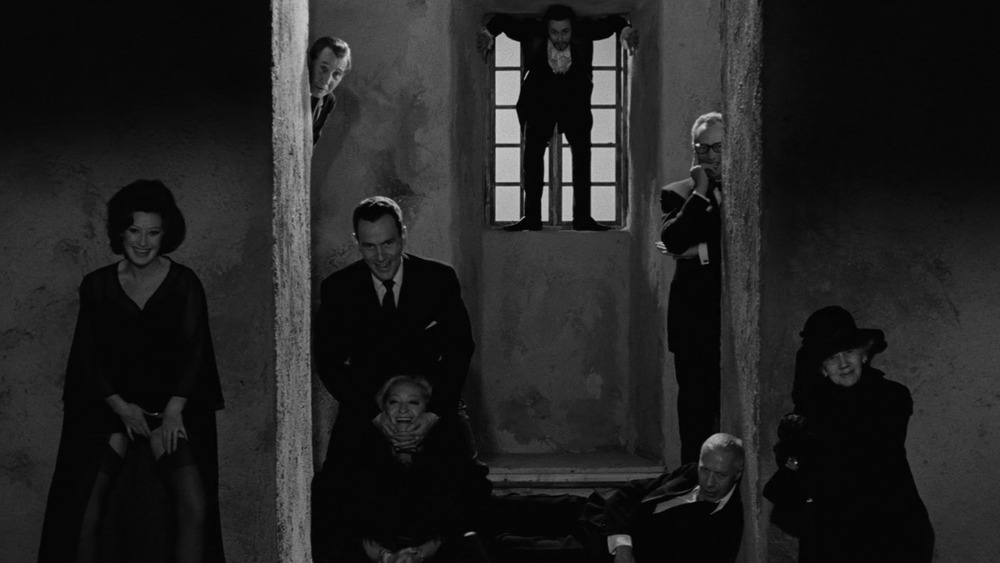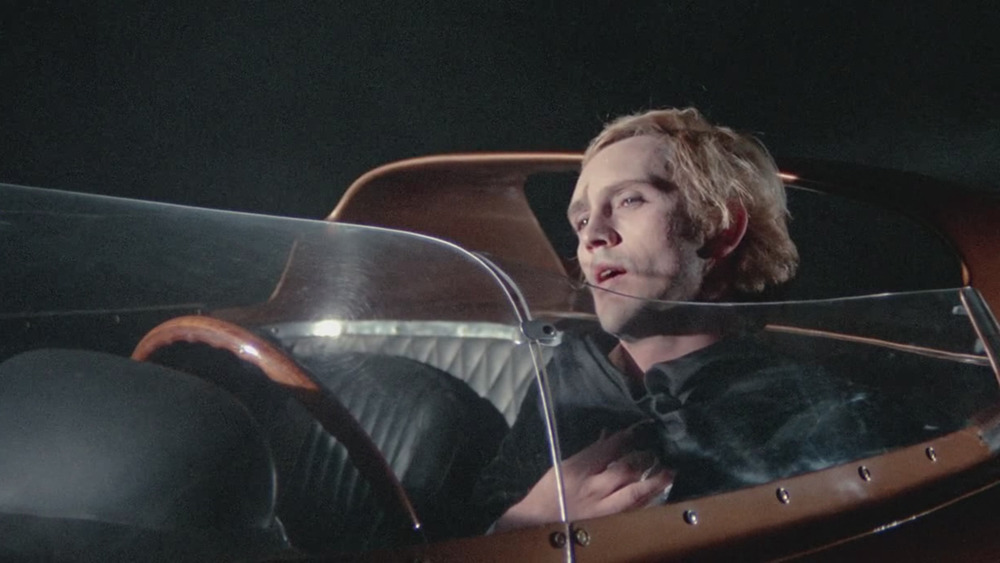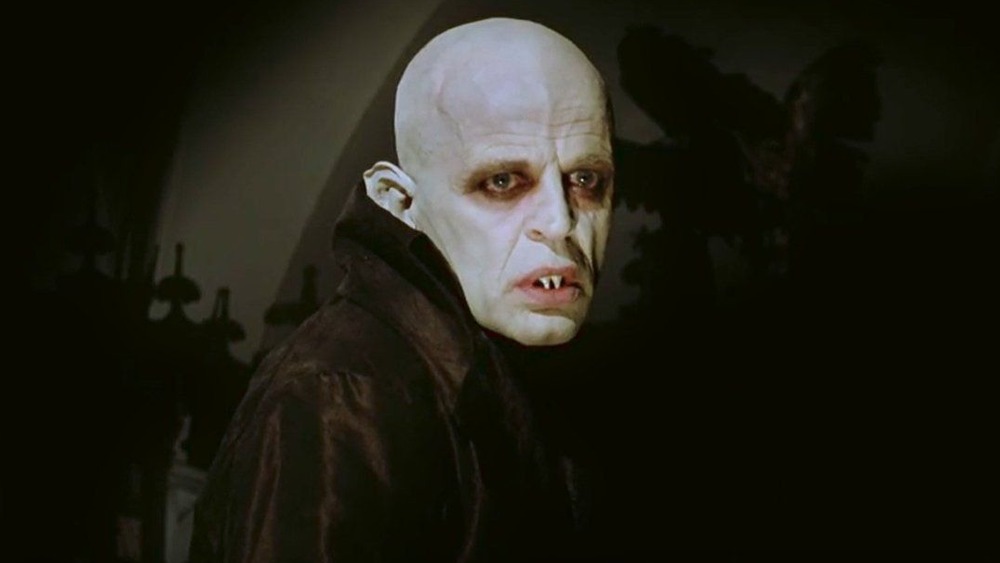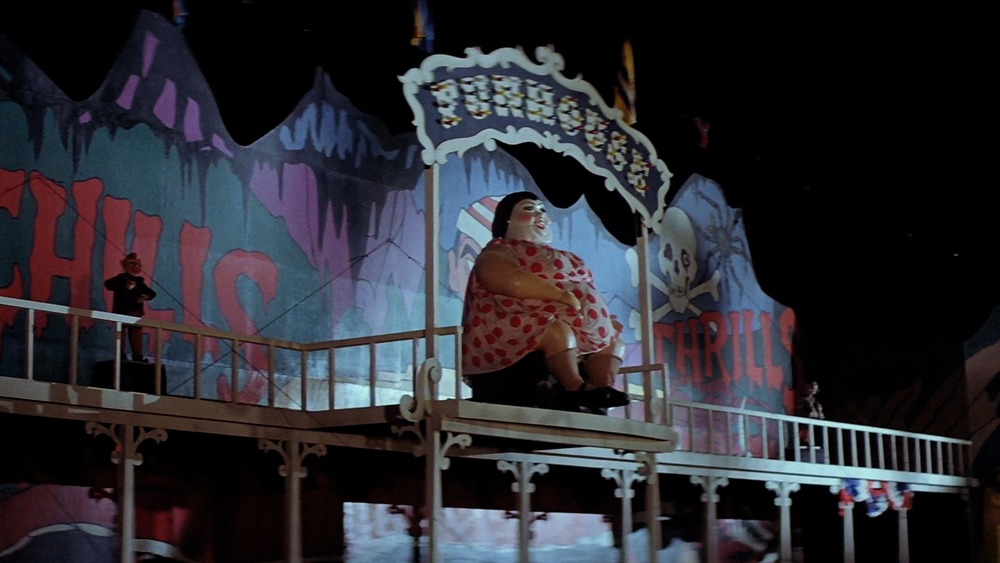Must-Watch Retro Horror Movies Everyone Forgot About
There are certain horror classics that every serious fan needs to check off their lists — your Draculas, your Frankensteins, your Halloweens and Texas Chain Saw Massacres. But what do you do when you've seen them all already? Fortunately, the accepted canon barely scratches the surface. No less an authority than Stephen King says in Danse Macabre, "A true horror film aficionado is ... like a prospector with his panning equipment or his wash-wheel, spending long periods with his going patiently through common dirt, looking for the bright blink of gold dust or even a small nugget or two."
Fortunately, your generous hosts here at Looper have decided to save you some of that digging and present some finely polished nuggets we've dug out of the heap of horror history. We've got musty old movies oozing with shivery black-and-white atmosphere, imports from far beyond the borders of Hollywood, and classics from great directors who proved themselves in other genres and showed they could handle horror just as well as the old pros. These must-watch retro horror movies may be forgotten, but they deserve to be remembered alongside the terrifying classics.
Murders in the Rue Morgue is a retro masterpiece of eerie atmosphere
With the classic Dracula and Frankenstein franchises, Universal was the biggest name in horror for most of the Old Hollywood era. And it owed its dominance of the genre in large part to the German filmmakers who came to the US after creating the greatest horror movies of the silent era and fleeing the rise of fascism in their homeland.
The spirit of classics like Nosferatu and The Cabinet of Dr. Caligari is all over the Universal horror movies, but none of these American films captured the haunting power of those European images like Murders in the Rue Morgue, shot by German cinematographer Karl Freund. He creates a vision of 19th-century Paris eerily hidden in shadows and fog, and the city's crooked rooftops come far closer to the heavily stylized German approach than Hollywood would ever allow again. And camera buffs will love one dizzying scene featuring star Sidney Fox on a swing, with the camera attached.
As for the plot, the legendary Bela Lugosi stars as Dr. Mirakle, a scientist and carnival performer who performs with a trained gorilla and kidnaps women for secret experiments with obscure goals. But part of what makes Murders so great is that Lugosi doesn't steal the show from the hero, played by Leon Ames. Far too many horror movies ask us to sympathize with bland nobodies who are far less interesting than the villains, but Ames' Pierre Dupin is just as darkly intriguing as Lugosi, with his Dracula-worthy sense of style and obsessive pursuit of the murderer.
The Black Cat pits Lugosi against Karloff
The two greatest horror stars of the black-and-white era, Boris Karloff and Bela Lugosi, appeared together for the first (and best) time in 1934's The Black Cat. Based on (the title of) the classic Edgar Allan Poe story, the movie stars Lugosi as Dr. Vitus Werdegast, who returns to Hungary for revenge on his former commanding officer, the devil-worshipping Hjalmar Poelzig (Karloff), who sacrificed him to the enemy in World War I and abducted his wife and daughter. Complicating Werdegast's plans, he's stranded with two young honeymooners in a castle that Poelzig literally built on the graves of his soldiers, and he has to protect them from Poelzig's satanic plans.
That castle is unforgettable, terrifying with its cold, angular design and space-age appliances that build on the metaphor of the modern world's foundation on past horror. Both stars are at their best here, and Lugosi gets to show his range by playing the hero for a change, but he's complicated by all the creepy mannerisms and white-hot hatred of his villainous roles, making for an uneasily compelling character. The Black Cat is the perfect movie for all the misfit horror fans who find themselves identifying more with the weirdos Lugosi plays than your typical square heroes. Finally, the weirdo gets to be the hero. However morally dubious he becomes, especially in the brutal climax, Werdegast's determination to protect the young couple from his own family's fate makes him one of the great horror heroes.
Son of Frankenstein is a worthy installment in the classic series
No one's forgotten about Frankenstein or The Bride of Frankenstein, but most people's interest in the series stops there. It makes sense — those movies have the skillful direction of James Whale, who bowed out of Son of Frankenstein. But his replacement, Rowland V. Lee, is no slouch, either, and Son expands the world of Frankenstein even further than Whale could've dreamed.
In a story that inspired Young Frankenstein, which lifted many scenes and characters directly from this film, Basil Rathbone plays Dr. Frankenstein's son, Wolf. The young scientist moves with his wife and child into the castle his father willed him, over the objections of the suspicious villagers. That castle is more spectacular here than ever, full of crooked, rickety stairs, and a high-ceilinged dining room where Wolf and his wife eat, complete with gargoyles looming over them.
Bela Lugosi gives one of his best performances as Ygor, a horrible, hateful little man who survived a hanging but whose relationship with the Monster (played, for the last time, by Boris Karloff) is still surprisingly tender. And in a story focused on monsters and their enablers, Lionel Atwill gives a heroic performance as Inspector Krogh (who'd be parodied in Young Frankenstein as Inspector Kemp), a man who lost an arm to the Monster as a child but still does his best to protect Wolf from the villagers on one side and the doctor's own creation on the other.
The Tell-Tale Heart is a faithful adaptation of Poe's horror story
The Golden Age of animated shorts is full of spooky skeletons and ghosts tangling with Bugs Bunny and Mickey Mouse, but most studios didn't see animation's potential for full-on horror. But UPA wasn't most studios. Founded by animators who left Disney in the 1941 strike, UPA aimed to combine cartoons with graphic design and fine art, drastically changing the shape of the medium in the '50s and beyond. That was especially true when the studio turned to Edgar Allan Poe.
Poe is one of the most adapted authors in movie history, but most adaptations don't take much more than the titles of his stories, as the tales are too focused on his narrators' internal sensations to fit into a traditional narrative. As far as that goes, UPA's The Tell-Tale Heart is one of the most faithful adaptations Poe ever got. It's almost abstract, showing everything from the narrator's warped perspective (we never see his face) that turns his house into a desolate landscape where the corners don't quite meet. Plus, this 1953 short shows how the "evil eye" of an old man has leeched into the narrator's mind, as we witness animated spiderwebs emanating from his dull eyeball.
There's not much animation in this animation — even the murder is shown in the abstract movements of the old man's diamond-patterned blanket. In fact, much of the film takes place in total darkness. But the still images are so beautifully horrible that it's hard to complain, and James Mason's unhinged narration brings the murderer to life so perfectly that we don't need to see him to understand him.
The Innocents is a retro horror tale that still creeps us out
Years before The Turning or The Haunting of Bly Manor, director Jack Clayton gave us the definitive version of Henry James' genre-defining ghost story, The Turning of the Screw, with The Innocents. Deborah Kerr stars as a governess for two creepy children who she fears are in danger of being possessed by malevolent spirits.
You'll already know you're in for something good from the first frame. The Innocents begins in total darkness, with no sound except for the eerie voice of a child singing a nursery rhyme. Even the famous 20th Century Fox logo comes and goes without its trademark fanfare. Most horror movies shortcut their way to shock value with sudden loud noises and over-the-top gore effects, but Clayton does a lot more with a lot less, making simple things like whispers and children laughing into the stuff of nightmares.
By the time The Innocents premiered in 1961, black and white was on its way out, and Clayton made the exact right choice by going against the grain. In the absence of color, the shadows are overwhelming, pure black, creating an oppressively terrifying atmosphere. What you hear is just as frightening as what you see, with a minimal score and echoing or inhumanly distorted voices that will creep right under your skin. So does Deborah Kerr's performance, making us scared for the governess and scared of her with equal skill as she descends deeper into her obsession with fighting ghosts that may or may not even exist.
The Trial is definitely Orson Welles' most terrifying film
Director Orson Welles began his career with Citizen Kane, a movie that's universally considered as the greatest of all time. In fact, calling something "the Citizen Kane of so-and-so" is the highest praise you can give it. So when Welles says another of his films is even better, you'd better listen.
Welles adapted Franz Kafka's classic novel with Psycho star Anthony Perkins as Josef K., who wakes up to find he's under arrest for a crime his captors refuse to name. It only gets stranger from there. By this point in his career, Welles could no longer command big Hollywood budgets, but he makes the most of his limited funds in The Trial to create a horrific parallel universe out of the ruins of postwar Paris. The courtrooms look both like they've stood for years and like they could fall down any moment, and K.'s whole world appears like it's dying before our eyes.
And in the climax, The Trial captures the feeling of a nightmare better than any other movie as K. runs from an unknown enemy through a rapidly changing landscape, first through a tunnel of wooden slats with eyes and teeth peeking from between them, then through the same tunnel as it turns to stone, before finally arriving in a pitch-black medieval church where Welles himself, as the Advocate, confronts him.
X: The Man with X-Ray Eyes is a retro B-movie that will leave you unsettled
Roger Corman was the king of the B-movies throughout the '50s and '60s, but some of them were world-class quality. One of his best is X: The Man with X-Ray Eyes, which he produced and directed himself. The pedigree of Oscar-winning star Ray Milland goes a long way. As a scientist who experiments with a formula for X-ray vision on himself, he makes pulpy dialogue ("I see a city unborn. Flesh dissolved in an acid of light. A city of the dead.") sound downright poetic.
But he's far from the only MVP in the crew. Instead of the loud, pushy score you'd expect from this kind of movie, Les Baxter's music is downright eerie, especially when he uses the ghostly whining of the theremin. Superstar comedian and future Toy Story star Don Rickles plays a wonderfully sleazy carnival promoter that X goes to work for after he goes on the run, and he even gets to show off the insult comedy that made him a star. Corman and cinematographer Floyd Crosby create gorgeous, psychedelic images to represent X's newfound vision. And the whole thing is paced so sharply that it almost dares you to stop paying attention, with the edits and camera constantly moving forward to the shocking ending, where X's formula lets him see farther than he ever should have, and the story shifts gears into full-on cosmic horror.
Hour of the Wolf is a nightmare from one of the all-time greats
Despite over a century of proving how great it can be, horror is still one of the most disrespectable genres. But that hasn't stopped some of the world's most respected filmmakers from trying their hand at it. It's hard to think of anyone further from the sleazy, sweaty world of B-horror than Ingmar Bergman, the acclaimed Swedish director of cerebral dramas like The Seventh Seal and Persona. But his movies are full of ominous atmosphere and supernatural intrusions, and they prove existential dread can be just as horrifying as a maniac with a machete. So maybe it was inevitable he'd eventually channel those fears into a more standard ghost story.
That's just what he does in Hour of the Wolf, and he delivers the artistry right alongside plenty of meat-and-potatoes terror. It stars Max Von Sydow and Liv Ullman as a painter and his wife who move to an isolated island that seems distant from the rest of humanity but has a very lively population of ghosts in the abandoned castle. The sound design makes something as simple as the roar of a dinner party terrifying before Bergman finds more traditional scares in the horrific climax. Without Hollywood special effects, a lot of the supernatural imagery happens between cuts, but it's done so masterfully you may have to watch it twice to believe you didn't actually see it. And in another terrifying scene, von Sydow does something unspeakable while cinematographer Sven Nykvist turns up the contrast so high that the white of his von Sydow's is blinding.
Spirits of the Dead has one scary Satan
Three great European directors tried their hand at horror for Spirits of the Dead, with Roger Vadim (Barbarella) and Louis Malle (My Dinner with Andre) each adapting stories by Poe. But the movie saves the best for the last, ending with the great Italian director Federico Fellini (La Dolce Vita) adapting "Never Bet the Devil Your Head" as "Toby Dammit."
Terrence Stamp stars as the titular movie star, disheveled and falling-down drunk but still oozing shabby charisma. Toby is in Rome to film "the first Catholic Western," and he just barely drags himself through painful interviews, parties, and a disastrous awards show before he finally gets the Ferrari his producers have promised him. He gets behind the wheel and takes off, trapped every way he turns by Rome's medieval architecture, before he finally makes it to the highway. It's a thrilling, haunting scene that perfectly captures the feeling we've all had of wanting to get as far away as we can as fast as we can.
But Toby can't escape the devil, who looks nothing like he does in most horror movies but instead takes the form of a little girl. But that girl is still more terrifying than your average cinematic Satan, creating a haunting image of one piercing eye and her hungry mouth peeking out from behind her long, blonde hair.
Nosferatu the Vampyre features one of the very best Draculas
There are so many terrible remakes of horror classics out there that you might start thinking there's no way to make a good one. But Nosferatu the Vampyre proves it's possible. You just have to be as legendary a director as the movie you're remaking.
Werner Herzog became one of the biggest names in international film with his horror-leaning dramas like Aguirre: The Wrath of God and Fitzcarraldo. More recently, he's focused on blockbuster documentaries like Grizzly Man, and he's wholeheartedly embraced the memeification of his grim, existential outlook and distinctive voice. It's easy to see the hand of a nature documentarian behind Nosferatu. The original silent version took place in heavily stylized studio environments, but Herzog finds all the terror he needs in the real world, filming in medieval ruins and panoramic Central European landscapes that are full of both beauty and the potential for evil.
Nosferatu was inspired by Dracula, and Herzog restores the names of Stoker's character to his own interpretation, with his favorite star Klaus Kinski as the most haunted, tormented Dracula in film history. The rest of the cast is just as good, with Isabelle Adjani ethereally beautiful as Lucy Harker and Roland Topor as a Renfield so creepy he even skeeves Dracula out. This version of Dracula is less dangerous for his personal bloodsucking than his role as a plague carrier, and Nosferatu's surreal scenes of farm animals running loose and the infected feasting in the middle of the town square before they die are even more haunting in a post-pandemic world.
If you want some retro horror scares, check out The Funhouse
After redefining horror movies with The Texas Chain Saw Massacre, director Tobe Hooper jumped into the 1980s with The Funhouse. Here, four teenagers go on a double date to a traveling carnival and decide to send the night inside the funhouse after it closes. Only one of them will live to regret it. After they see the horribly deformed carny Gunther kill one of his colleagues, the villain and his father hunt the kids down through the darkened house of horrors. It's the perfect setting for a horror movie, packed with lurid lights and creepy animatronic dolls.
Even before the scares start, The Funhouse is a must-see for the atmosphere of the carnival, so vivid you can almost smell the straw and hot dogs. It's grungy and run-down but still somehow magical, just like any good carnival should be. And once the scares start, they don't let up, with Hooper packing as many shocks as he can into the terrifying cat-and-mouse game inside the funhouse.
The deformed carny never took off quite like Leatherface, but he's a great monster in his own right. The Funhouse goes more in depth into the messed-up family dynamics of The Texas Chain Saw Massacre, with Gunther as a frightened overgrown child cowed by his horrible father. But he's just as horrifying as he is pitiful, especially when he takes off his Frankenstein mask to reveal his freakish face — pale, fanged, and apparently split in half.
